#Ebro River
Explore tagged Tumblr posts
Text
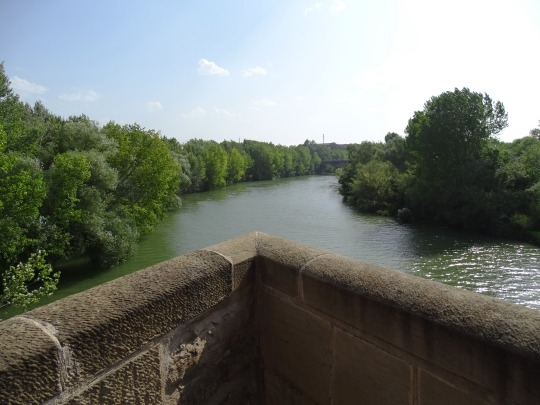

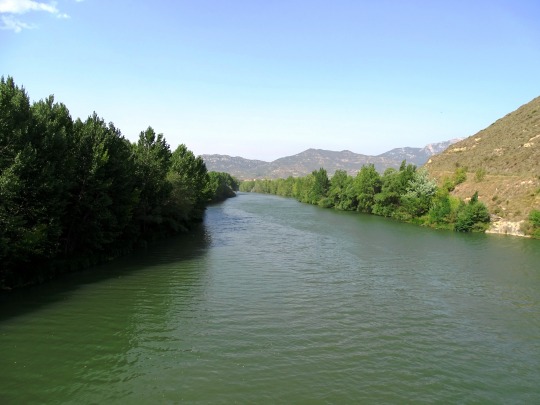

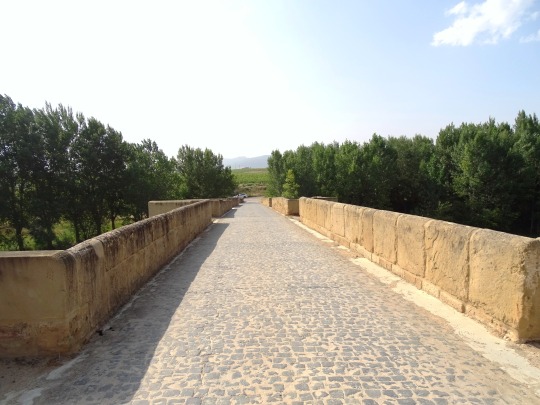
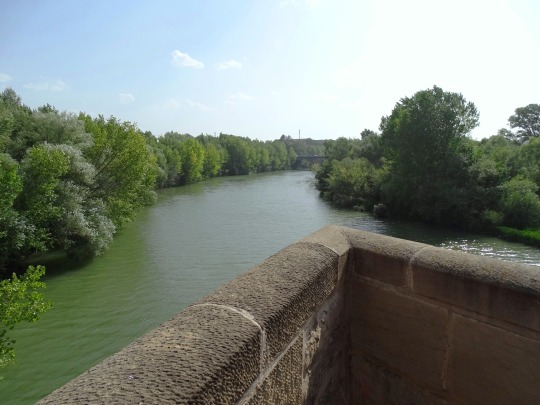

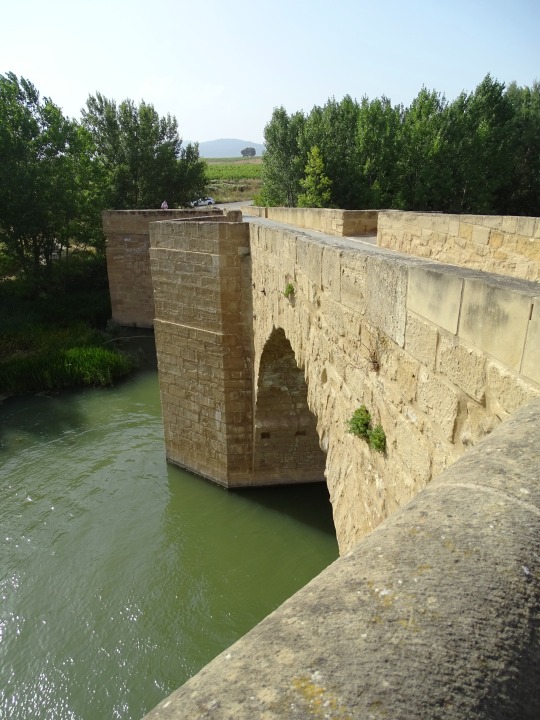
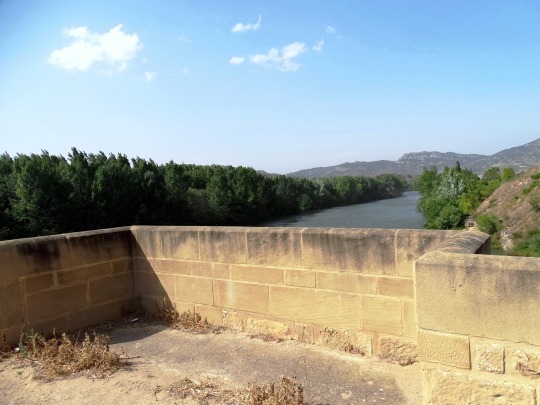
Puente de Briñas, Spain (No. 2)
The property is 1.2 km from Haro Town and 1.8 km from Briñas. Next to it is a much newer iron bridge, over which runs the N-124 road.
For centuries it was very important, since it was one of the few bridges over the Ebro and was part of the Camino de Santiago Vasco del Interior.
It was a widely used step for trade with Álava and Navarre, being important the transit of goods for which it is known that in the fifteenth century during the time of the Catholic Monarchs tolls were charged to be able to pass them over it.
Source: Wikipedia
#Puente de Briñas#Briñas Bridge#Ebro River#Haro#Spain#travel#original photography#vacation#tourist attraction#landmark#cityscape#landscape#architecture#engineering#medieval bridge#Northern Spain#España#summer 2021#river bank#nature#flora#hills#La Rioja
12 notes
·
View notes
Photo
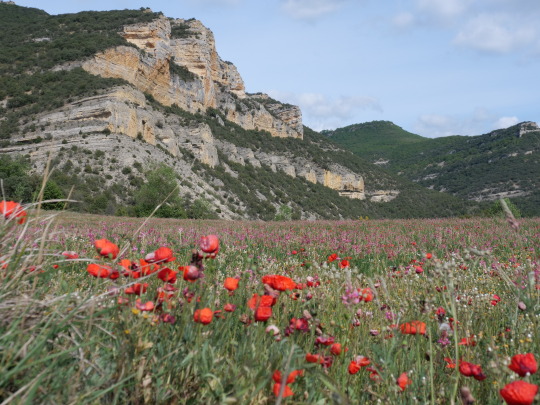
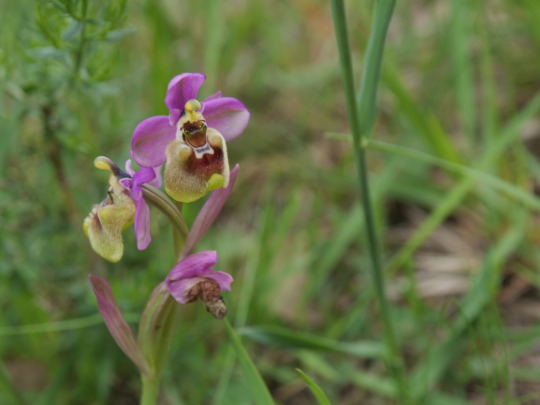






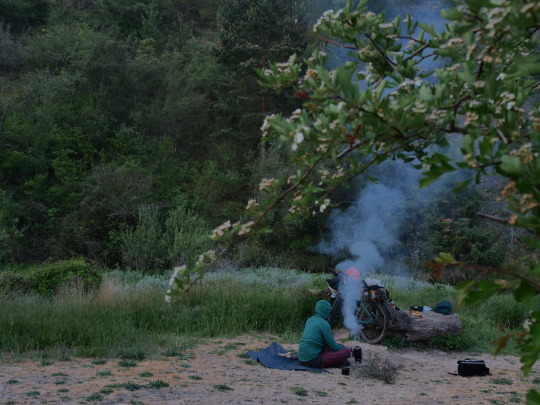

After leaving the tunnel the rest of the day was spent following the River Ebro on the excellent GR 85 path. Proper mountain bike style riding, meandering in and around wooded limestone gorges and along the top of towering escarpments with some steep, tight and rocky switchbacks adding a bit of spice.
Again the night was surprisingly cold, dipping below zero.
2 notes
·
View notes
Text
Video by carlesrgm on Instagram. Song: "vull petar-ho" by Oques Grasses.
Every year, the towns around the Segre river in Western Catalonia (Ponent) celebrate the transsegre: a non-competitive race down the river using home-made boats.


Fotos by Transsegre Balaguer on Flickr.
The event, which this year is in its 39th edition, has become a very popular festivity for local people. It lasts for 2 days: on Saturday, the boats start the race in Camarasa and sail down the calm waters until Sant Llorenç de Montgai. That evening, there is a party and free concerts until early morning. Sunday at noon, the sailors who managed to arrive the previous day leave on their boats again, starting in Gerb to reach Balaguer. Meanwhile, people gather to watch the boats, eat appetizers and watch street performers.
#camarasa#balaguer#sant llorenç de montgai#gerb#catalunya#transsegre#tradicions#(at this point i add it to that tag)#sailing#sail#river#ebro#europe#travel#adventure#wanderlust#nature
37 notes
·
View notes
Text
Agua que no has de beber, déjala correr...
1 note
·
View note
Photo

The Battle of Zama - The Beginning of Roman Conquest
The Battle of Zama (202 BCE) was the final engagement of the Second Punic War (218-202 BCE) at which Hannibal Barca of Carthage (l. 247-183 BCE) was defeated by Scipio Africanus of Rome (l. 236-183 BCE) ending the conflict in Rome's favor. The Second Punic War had begun when Hannibal attacked the city of Saguntum, a Roman ally, in Spain and continued with a number of stunning victories by Hannibal in Italy, most notably the Battle of Cannae in 216 BCE.
Hannibal seemed unstoppable until Scipio took command of the Roman forces after Cannae, defeated Hannibal's brother Hasdrubal Barca (l. c. 244-207 BCE) in Spain, driving him into Italy, and then drawing Hannibal back to North Africa by threatening the city of Carthage. Hannibal met Scipio at Zama in defense of his home city but Scipio, using Hannibal's same tactics from Cannae, won the day and Carthage fell to the Romans.
Hannibal then lived the rest of his life as a fugitive, finally taking his own life rather than ever surrender to the Romans. Although initially hailed as Rome's savior, Scipio was later vilified by his countrymen who forgot what they owed him. He left Rome for his villa and gave instructions in his will that he should be buried at his estate rather than in the ungrateful city of Rome. The Battle of Zama is remembered for Scipio's brilliant tactics, based on Hannibal's, which would afterwards become standard operating procedures for the Roman military and enable them to build their empire.
Background & First Punic War
Carthage and Rome first came into conflict over the island of Sicily, which both controlled parts of, igniting the First Punic War (264-241 BCE). The Carthaginian forces were led by Hamilcar Barca (l. 275-228 BCE) who used his fleet to strike without warning at Roman ports and outposts along Italy's coast, cutting supply lines, and then attacking with his army. Carthage, at the beginning of the war, had the greatest fleet in the Mediterranean while the Romans were only used to land engagements. Hamilcar's clever tactics and his crews' experience in Carthaginian naval warfare led to a series of decisive victories early in the war.
Rome quickly taught itself how to fight at sea, however, and the Carthaginian government offered their general little support so the tide of the war shifted in favor of the Romans. Hamilcar defeated Rome at Drepana in 249 BCE but, receiving less and less support from his home government, steadily lost engagements while Rome grew stronger until, in 241 BCE, Carthage was forced to sue for peace and had to pay a large war indemnity to the victors.
Afterwards, Hamilcar went to the Carthaginian-held regions of Spain – ostensibly to take control of the silver mines there to pay Carthage's debt to Rome – and began reequipping the Carthaginian army to resume the war. He brought his son Hannibal with him as well as his son-in-law Hasdrubal the Fair (l. c. 270-221 BCE) and, later, his younger son Hasdrubal Barca.
When Hamilcar died in 228 BCE, command of the army went to Hasdrubal the Fair who favored diplomatic measures with Rome over military conflict. Hasdrubal the Fair negotiated the Ebro Treaty in 226 BCE which stipulated that Roman and Carthaginian territories in Spain would be set by the Ebro River: Rome would hold the regions to the north, Carthage the regions to the south, and neither would infringe upon the others' lands. Hasdrubal the Fair was assassinated in 221 BCE, however, and command went to Hannibal, who had sworn eternal enmity with Rome.
Continue reading...
29 notes
·
View notes
Text

The spires of the Basilica del Pilar next to the Ebro River as it passes through Zaragoza, Spain
27 notes
·
View notes
Note
Hello Producer Guy!!!! Question question what inspired you to make Ebro4 + The E-brotherhood? When I search up 'Ebros' it refers to the river in Spain soooo any comment about that???
"Oh, The "bro" in Ebro simply refers to brother. The Third, Fourth, Fifth, etc E-Brother" "As for the river that is just a funny coincidence." "As for what inspired me? I wanted Ebro4 to be a more complex character then generic "oooh wacky criminal who does bad things and shoots people and has mooneeeyyyy" so, I made him the leader of a Militia. The Shadow Client's Milita from The Hitman Games inspired me to have his secret base be an Estate for now."
6 notes
·
View notes
Text
Countries that are no more: Ancient Carthage (814BC-146BC)
The state discussed in this post is one of the most famous and important in antiquity. Yet, it remains one of the most elusive and mysterious civilizations in world history because its own written records have been virtually erased with all contemporary written records coming from foreign sources that both praised and reviled its existence. However, it was influential for its model of government, its expansion of Mediterranean trade, its influence on models of economic production, naval exploration and for its military leaders whose tactical and strategic prowess influence warfare to the modern day and for its rivalry with the other emerging Mediterranean superpower of antiquity: Rome. A rivalry that is characterized as the quintessential clash of civilizations. This is Carthage.
Name: In its native language, the Phoenician dialect known in Latin as Punic, it was 𐤒𐤓𐤕𐤟𐤇𐤃𐤔𐤕, or annunciated as qrt-ḥdšt or Qart-Hardasht. This translates into English as "New City". In Latin it was known as Carthago or Karthago, the modern English pronunciation of Carthage comes by way of French.
Language: Carthage as a city-state and its empire more broadly held a cosmopolitan mixture of peoples and languages. However, the founders of Carthage and its ruling elite spoke Punic, a dialect of Phoenician associated with the city of Carthage which was founded by Phoenician colonists from the Levant. Punic was Phoenician in origin and became a distinct local dialect of Phoenician speakers in Carthage and other cities. These settlers founded colonies throughout North Africa and the Western Mediterranean. The Phoenician language and its dialects were from the Semitic language family native to the Middle East. It originated as a distinct dialect of the Canaanite peoples from who the Phoenicians and subsequently the Carthaginians descend from. The Canaanites also gave rise to the other Semitic speaking peoples such as the Israelites, Moabites and Ammonites among others. Modern Hebrew is said to be the extant language most similar to ancient Punic. In Carthage's empire there were also local varieties of Berber (Amazigh) languages spoken by the native Berbers who settled in North Africa. There were also local languages in Iberia (Spain and Portugal) from the Iberian and Celtic tribes settled there and the languages of native Sardinian and Balearic peoples as well. Additionally, ancient Greek was spoken by Greek colonists, mercenaries and traders who also settled within Carthage's empire and sphere of influence.
Territory: The city of Carthage is located in the environs of modern Tunis, capital of the modern state of Tunisia in North Africa. It was from this centrally located city founded by Phoenician colonists that their subsequent empire grew. The established contact and control with other Phoenician colonies in the area such as nearby Utica and eventually grew to control all of coastal North Africa from modern Morocco to western Libya. The modern states of Morocco, Algeria, Tunisia and Libya were its core territory, with Tunisia being its heartland. It also included Malta, the western half of Sicily, Sardinia and Corsica's coastal regions, the Balearic Islands of Spain and the southeastern portions of Iberia, particularly the coastal areas with influence into parts of the interior and south of the Ebro River.
Symbols & Mottos: The symbols associated with the state of Carthage are often in reference to their pantheon of gods which were quite extensive but centered mostly around the Phoenician gods but also included Berber, Iberian and Greek influences within their pantheon as well. A military standard associated with Carthage includes a staff with a sun disc and topped with a crescent moon. Also, the sign of Tanit, a Phoenician goddess's whose symbol was found on Carthaginian ruins along with Phoenician ruins found back in the Phoenician colonists' homeland in the Levant (Lebanon, Israel and Syria). The sign of Tanit appears in many varieties but is usually found as a schematic like sketch of a person with a triangular base with a disc on top with horizontal lines then pointing upwards like raised arms.
Religion: With Phoenician settlers being the originators of Carthage its ruling elite, the primary state religion was their variety of the ancient Phoenician religion which was polytheistic and included many notable gods and goddesses from Tanit to Baal Hammon, Melqart and Astarte among others. Many of these gods found companions with the Greeks and indeed due to the interfacing with Greeks both through trade and war, some Greek gods would also be incorporated into the Carthaginian pantheon, though it remained distinctly Punic at its core. There also appears to be Berber (Libyan and Numidian) influences along with Sardinian and Iberian interfacing that both saw the spread of worship of the Punic/Phoenician deities with local influences likewise being adopted by the Carthaginians. Even some ancient Egyptian gods appear to be included in Carthaginian worship. This syncretism and tolerance reflect the cosmopolitan outlook and composition the Carthaginians had within their realm.
There were priests who maintained the temples and sanctuaries devoted to particular deities. Likewise, Carthaginians practiced everything from ritual banquets to funerary rites such as those in the Levant like disposing of the remains of the dead, feasts for the dead, ancestor worship and goods in the tombs of the dead, indicating belief in life after death. Cemeteries were often built outside the walls of Punic settlements and included stelae with inscriptions serving as grave markers. Carthaginians practiced both burial and cremation.
There does appear to be cases of animal sacrifice to appease the gods in Carthaginian society as well. This tended to follow very specific regulations and rules.
The most controversial topic of the Punic religion however appears to be the practice of child sacrifice. The sources for this we must bear in mind come from Greco-Roman writers that weren't known to actually witness the practice and from civilizations that had biases toward Carthage more broadly. Yet both Greek and Roman sources cite the Carthaginians as practicing child sacrifice in their religion. These sources sometimes do contradict one another in their specifics. Modern historians debate the extent of this practice and what are the contents found at the sites known as Tophet in urns with ashes that may come from human infants. The Greco-Roman sources state children were specifically killed for ritual purposes and killed in various manners and burned as offerings. Based on archaeological findings some historians take the position that the practice may have occurred but may have been relegated to the ritual cremation of infants who died of natural causes. Others uphold the Greco-Roman sources and other deny the practice at all, chalking it up as pure invention of biased sources from Greece and Rome. Because Carthage was destroyed by Rome in 146 BC and virtually all extant written sources on Carthage come from Roman and Greek sources, there doesn't appear to be any definitive answer to this practice's purported extent or even its existence. Modern archaeology can lend more nuance to the topic but a clear answer like much of what we know about Carthage and its society remains a mystery.
Currency: The basic coinage of Carthage was called the shekel which derived from its Phoenician antecedents. There were gold, silver and bronze coins found throughout Carthage's empire. Mints were found not only in North Africa but Sicily and Iberia. Coins depicted everything from date palm trees to famous soldiers and politicians both Carthaginian in origin like the Barcid family of Hannibal Barca and even Greek rulers such as Alexander the Great.
Population: At its peak the empire had probably 3.7-4.3 million people. The city of Carthage proper at its peak was anywhere 250,000-500,000 people.
Government: The basis of our understanding of Carthage's governance is limited and largely based on ancient Greek and Roman sources. Some of which write of it in disparaging terms and others praise it for its complexity and nuance.
The basic understand is that during the first few centuries of Carthage's existence it was probably a monarchy. However, the extent to which the kings ruled over Carthage is debated. The Phoenician city states from which Carthage descended, namely Tyre had nominal monarchs but who deferred to a council of advisors who helped craft policy and administer the law. It seems reasonable that Carthage followed this political model in its earliest stages with nominal monarchs who likewise consulted a council of advisors made up Carthaginian nobility to craft and administer policy. The degree to which kings of Carthage held power probably fluctuated.
Following the First Sicilian War against the Greek colonists on Sicily in 480 BC, the nature of Carthage's government changed gradually with a weakening of the monarchy. By the 300s BC Carthage was at its peak and best characterized as an oligarchic republic. It was noted to have numerous checks and balances on the branches of government, a vast and complex administrative state, high levels of public accountability and participation in civic duty. Aristotle the famed Greek philosopher wrote on Carthage in his treatise "Politics" as the only non-Greek polity to be represented in the work.
Carthage as a republic became ruled nominally by two simultaneously elected non-hereditary magistrates called sufetes or shophets. This position's title translates as "judges" and they are said to handle a mix of judicial and executive powers. How they were elected and who was eligible for this head of state position is not known. What is known is they were always from the oligarchic ruling class of Carthage and that they held annual terms. The Roman writer Livy states this was comparable to the Roman republican practice of electing two consuls for annual terms. They are said to have ruled jointly and likewise handled matters of state through the convening and presiding over the supreme consultative council known as Adirim (similar to the Roman Senate), submitting legislation to the popular assembly and adjudicating trials. The sufetes interestingly did not hold any military power as this was separated and reserved for military commanders with the generals reporting to the Carthaginian assembly in the Adirim.
The Adirim held about 30 members on the council and like senators in Rome were elected from the wealthy elite merchant families of Carthage. They administered the treasury, conducted foreign affairs and providing some control over military affairs. It is said matters of state required unanimous decision making to go into effect.
Carthage also had judicial assembly called the One-Hundred and Four. These judges provided oversight of the military and other politicians and bureaucrats within Carthage. As an example of Carthage's political checks and balances, the One-Hundred and Four had the power administer monetary fines or even the death penalty, sometimes by crucifixion on military or government officials found to have engaged in unbecoming behavior that went against the interest of the public. It also formed small committees to provide oversight on political matters.
Separate from these bodies also came numerous junior bureaucratic positions to held administer everything from tax collection, public works and the state treasury.
Carthage also contained at local levels trade unions, a popular assembly and town meetings. In matters where the sufetes and Adirim could not decide law in a unanimous manner a popular assembly was consulted to make a final determination. Whether this was a formal institution or ad hoc solution has never been determined.
Aristotle singled out the Carthaginian government as more meritocratic than its contemporary Greek counterparts. He also praised its complex balance of monarchical, aristocratic and democratic elements. Some other Greek writers went so far as to say it was the best form of government in existence at that time only equaled in the Greek world by Sparta. Meanwhile, Aristotle himself stated that Carthage had some form of constitution and found it superior to Sparta's.
The Greek historian Polybius writing for a Greco-Roman audience in his commentary on the Punic Wars between Rome and Carthage stated that Carthage had more democratic elements than Rome did and that the common people were on average given more say than Romans at the time. However, Polybius saw this as a detriment to Carthage during the Punic Wars, in his estimate too much bickering and infighting to gain a unanimous decision led to paralysis and indecision. Whereas he favored the Roman Senate's rules which were less democratic overall and therefore more decisive in determining important decisions at crucial moments such as in war.
Carthage's republican government appears to have been replicated in the colonies and territories throughout its empire with sufetes found at local colonial levels. There appears to be cooperation between Punic colonial officials and the local population under Carthaginian rule.
Carthage was primarily mercantile in its outlook. The control of trade commodities and goods throughout the Mediterranean was the basis for its economic development and always of primary concern. Hence the merchant class-oligarchy's vested interest in maintaining power.
Military: Carthage was a classic example of a maritime power. Its navy was its most important military branch in many ways. The navy was used to ensure control over the network of trade routes between the various parts of the Western and Central Mediterranean. It would win naval victories over its Greek and Roman rivals though it would ultimately face defeat by the Romans.
The navy was large in size for antiquity and benefitted from the Phoenician advent of serial production, the ancient equivalent of assembly line production which produced ships of good quality but in an efficient manner. They could maintain hundreds of ships at one time, even after their power dimmed with the rise of Rome.
The ethnic composition of the navy's sailors, oarsman, navigators and marine force was almost exclusively Phoenician. Given the Phoenicians long association with seafaring trade and navigation, the Carthaginians merely upheld this tradition including in warfare.
The army of Carthage, its land based military branch was also crucial in achieving its geopolitical goals. From the subjugation of rebellious tribes in North Africa and Iberia to battling the Greeks and Romans in foreign wars. In conjunction with the navy the ultimate goal was maintaining Carthage's control of trade routes and upholding its sphere of influence to maintain favorable conditions for said trade.
Due to the limited population of Phoenician colonists spread throughout the Carthaginian empire and given their traditional naval prowess, much of the army was not of ethnic Phoenician/Punic background. Instead, they relied on a multinational mix of auxiliaries and mercenaries to fill the armies ranks. There might be Phoenician officers and generals such as the famed Hannibal Barca and his relatives including his father Hamilcar and brothers Mago and Hasdrubal, but many other officers could be Greeks among others. The rank and file including Greek mercenaries fighting in the hoplite style, many Greek colonists from Sicily and Southern Italy, Berber infantry and cavalry, particular the light cavalry of Numidia famed for its fast-moving skirmishers armed with javelins and the Libyan infantry. Iberian infantry and cavalry of mixed Celtic and Iberian backgrounds. The famed light skirmisher infantry from the Balearic Islands who slung stones at their enemies were likewise part of the army. Also included in the army were Gallic (Celtic) infantry and cavalry from France and Italy, Sardinians (Nuragic) and Italic peoples such as Samnites, Lucanians, Etruscans and even some Latin peoples including Roman defectors could be found among Carthage's land army. The Phoenician rank and file in the army were usually colonists from other Punic settlements and not Carthage proper. The exception being the famed 3,000 strong Sacred Band of Carthage which were derived from the strongest and healthiest of Carthage's wealthiest families to fight as an elite special unit of the army. Armed and trained int the Greek hoplite style and phalanx formation.
The army also utilized African Forest elephants as a mobile force similar to a wrecking ball. These elephants provided a fearsome complement to the army and was famously used by Hannibal Barca in his crossing of the Alps to invade Roman Italy during the Second Punic War.
The major conflicts Carthage fought in its history were its colonial wars in North Africa against Berber tribes and kingdoms, Iberia and in Sicily first against the Greeks and later against its archrival Rome. The three Punic Wars fought between Carthage and Rome have been characterized by some historians as the ultimate and perhaps most important clash of civilizations in the ancient world and perhaps of all time. Ultimately, they would all end in Rome's favor and eventual destruction and razing of Carthage by Rome, ending Rome's biggest rival and leading to Roman supremacy over the Mediterranean basin for the next several centuries.
Economy: Economic concerns were of chief importance to the Carthaginians. Their empire was essentially a commercial one or rather an expansive and complex trade network with the state trying to aggressively uphold and expand its scope. Its origins lie with the Carthage's Phoenician roots. The Phoenicians based in the Levantine coast (mainly modern Lebanon, Israel and Syria) weren't one united people but rather a series of city states, with the most powerful being based on the coast. These included the cities of Byblos, Sidon and Tyre among the leading polities and all with an outward maritime trade orientation. The Phoenicians produced many goods and economic models that would be both enriching and influential on trade throughout the ancient world. This included purple dye for fabric, uncolored glass, wine production and Lebanese cedar for timber production and the serial production economic model.
Carthage was founded in modern Tunisia by Phoenician colonists from the city of Tyre (Lebanon) in the 9th century BC. They were not the first Phoenician colony in North Africa but they eventually rose to become the most aggressive and successful. In part this was due to its secure and strategic location. It soon became the leading trade center on the Western and Central Mediterranean. They controlled trade routes at sea and rose to prominence and domination among all the other Phoenician colonies setup in North Africa, Sicily, Malta, Sardinia and Iberia.
Mining for metals silver, lead, copper and tin were of crucial importance for the wealth of Carthage, in particular this motivated their expansion into Iberia. Additionally, the temperate and fertile climate of the Western Mediterranean lead to much wine production. They also traded in amber, timber, grains an food preservatives.
While mostly a maritime trade power, Carthage also had overland caravans to secure goods from the African interior and even the Middle East. Continual exploration for new and expanding trade routes and goods was also important for Carthage. Famed Carthaginian explorers of Punic origin included Himilco the Explorer who lived in the 6th and 5th centuries BC. He is said to have been the first Mediterranean sailor to have explored the Atlantic routes to Northwest Europe, visiting Portugal, France and the British Isles. Britain in particular was important to the ancient tin trade which was necessary in bronze production. Britain was known in the ancient world to the Carthaginians and Greeks as the Tin Isles.
Hanno the Navigator was said to have explore trade routes to western Africa. Reaching as far as modern Senegal and Cameroon,
Lifespan: Carthage was said to have been founded by Phoenician colonists from the city of Tyre circa the 9th century BC. A foundation legend raised from its founding. Namely the legend of Princess Dido from Tyre leading her fellow Phoenicians not as colonists looking for commercial benefits but political refuge from her dictator brother. According to legend Dido and her retinue arrived at Tunisia and tricked the local Berber king into grating them a sizable tract of land from which the core of what became the city of Carthage was founded.
The city was given the name by its settlers of Qart-Hadasht, which in the Phoenician language meant "New City". The year 814 BC is often cited as the approximate date of its founding.
Quickly Carthage made an association with and eventual domination of fellow Phoenician colonies in the area including Utica. Its favorable climate, arable land and strategic location were all crucial to Carthage's rapid growth and dominance of over other Phoenician colonies. It would expand to conquer lands ranging from the whole of North Africa from Morocco to Libya, the islands of Malta, Sicily, Sardinia, Corsica and the Balearics and parts of the Iberian Peninsula over the coming centuries found themselves either under direct Carthaginian rule or favorable treaties incorporating the lands into its sphere of influence hence creating a trade network and empire, a classic example of a thalassocracy.
Initially, the Carthaginians paid a tribute and maintained contact to its mother city of Tyre back in Lebanon. However, this became an irregular occurrence due to Carthage's increasing independence due to its great distance from the Levant and the assertive character to its own local citizenry. Carthage began to see a mix of Phoenicians and local Berbers creating a unique Punic culture that synthesized the two cultures and ethnicities over time with the Phoenician dialect and culture remaining dominant but adaptable for its ability to incorporate other cultures. This was true as its sphere of influences expanded in the Mediterranean.
Carthage's independence was not only due to its relative distance from Tyre but due to the events back in Phoenicia. Various sieges from Babylonia and eventually later the Persian Achaemenid Empire conquered Phoenicia including Tyre circa 530-522BC. The subjugation of these lands reduced contact between the Carthaginian settlers and their Tyrian origins which had until that date sent a steady flow of colonists. While some flow of other Phoenicians would continue, the population would be buttressed by local native populaces and other Phoenician colonies rather than direct Tyrian migration.
The city of Carthage itself expanded over the centuries and created several distinct districts and architecture. At its peak in the 4th century BC, it contained a population between a quarter and half a million people. making it one of the world's largest and most prosperous cities at the time. The city had a mix of wealthy villas, apartment blocks six stories high, had warehouse and commercial districts, goods markets, a Greek style agora or public space, elaborate gardens. temples to various gods, various government buildings and a unique double harbor known as the cothon, which became the physical feature along with the Byrsa hill most associated with Carthage. The cothon featured an outer commercial harbor and military inner harbor with ship warehouses on a man-made island from which ship repairs, construction and maintenance could be addressed through its serial production. The Byrsa hill was the central district of Carthage which contained important temples, it had stair way avenues which were relatively wide for traffic, whereas most of the city's routes had narrow winding paths to navigate. The city was said to have triple walls for defenses, a shorter outer wall made of either stone or wood, followed by a ditch, a second taller stone wall 5 meters thick, a second ditch and a third stone wall 10 meters thick and with armed towers able to hold a force of over 20,000 troops.
In 509 BC it signed its first treaty with Rome, its eventual rival which at the time was the inferior power still clamoring for power on the Italian peninsula. The treaty was meant to demarcate their respective spheres of influence. From 580-265 BC, the Carthaginians found themselves in a series of wars with the Greek colonies of Sicily and Southern Italy. Namely, the city state of Syracuse which was the principal Greek settlement on Sicily.
These wars were back and forth in nature, marked by victory and defeat on land and sea for both sides. Eventually Carthage would retain control over the western half of Sicily until its loss of control in the Punic Wars with Rome. The Sicilian Wars also saw the gradual weakening of the kings of Carthage and its transition to an oligarchic republic (see government section).
The Punic Wars (264-146 BC) began almost by accident with neither Rome nor Carthage initially planning a direct confrontation with the other. The city of Messana (Messina) in Sicily found itself in the 260s BC under the control of a group of Italian mercenaries who had previously served the tyrant (king) of Syracuse who had died in 280 BC. These independent mercenaries were a threat to both Carthage and Syracuse's interests on Sicily. These mercenaries named the Mamertimes (Sons of Mars) divided into two factions, over the issue of the new Syracuse tyrant Hiero II's planned retaking of Messana. One faction advocating a Carthaginian intervention to take charge of the city's security and the other advocating for Roman intervention from the Italian peninsula. Carthage arrived first with a land garrison and naval fleet in the harbor. The Roman Senate was reluctant to assist the mercenaries but recognized the potential threat a permanent presence of Carthaginians in Messana and its location on the narrow Straits of Messina between Sicily and Italian mainland could pose on Roman trade and security. It advocated sending an expeditionary force to retake Messana to eject the Carthaginians. The attack triggered the first Punic War between the two powers. It turned into a quarter century struggle that was marked by intense fighting mostly on Sicily.
The First Punic War was ultimately a Roman victory that ended Carthage's presence on Sicily. It also saw Roman advances in naval technology such as the corvus to help board Carthaginian ships. Hitherto the Romans had little naval strength relative to Carthage but its innovations in naval warfare proved crucial in undermining Carthage's longstanding naval superiority. Meanwhile on land, despite the back-and-forth nature of the battles, the Roman army's tactical flexibility often proved superior to Carthage which after 23 exhausting years agreed to peace. It gave up control of Sicily to Rome (aside from Syracuse) and paid a tribute over the course of 10 years.
Rome also after the war used Carthage's distraction against a Libyan rebellion in the Truceless War to take control of Sardinia and Corsica in 238 BC.
To compensate for the loss of territory on Sicily, Sardinia and Corsica, the Carthaginians under Hamilcar Barca tried to expand its territory in Iberia against Celtic and Iberian tribes especially to profit from increased mining production. They also gained new manpower and agricultural production to boost their economy and military again. They also had a standing agreement with Rome to not intrude north or south of the Ebro River respectively. However, an Iberian city of Saguntum south of the Ebro had an agreement with the Romans. This upset the balance of power established with Carthage in Iberia. Hamilcar Barca's son Hannibal now in charge of the Carthaginian army in Iberia an avowed enemy of Rome, besieged Saguntum which he took in 8 months. This is turn led to Rome's declaration of war, starting the Second Punic War which lasted for the next 17 years.
In one of the most famous military campaigns of all time, Hannibal and his army complemented by Carthaginians, Numidians, Celts, Iberians crossed the Alps and invaded Italy, taking the war to Rome's home territory. Hannibal showing his tactical prowess would defeat Roman armies repeatedly on their own territory most notably at the Battle of Cannae in 216 BC. Many Italian cities that had been incorporated into Roman rule over the previous centuries rose up to join Hannibal against Rome. However, Hannibal never had sufficient strength to directly besiege Rome. Rome was constantly tested by Hannibal's victories over the next 13 years in Italy, but they refused to surrender and adopted an attritional strategy, and this wore down Hannibal by gradually retaking Italian cities allied to him if not able to defeat him directly. Likewise, they repelled Carthage's attempts to reinforce him in Italy. They also faced mixed success gradually conquering Iberia from the Carthaginians. Finally, an invasion of Tunisia forced Carthage to recall Hannibal back to North Africa to defend the capital from a Roman assault. He met the Romans in the Battle of Zama in 202 BC which resulted in a Roman victory over Hannibal himself at once.
Hannibal advocated for the government of Carthage to negotiate a treaty with Rome which it did. Its terms were harsh. A stripping of all overseas possessions of Carthage in Iberia and elsewhere including some African territories. A large punitive indemnity to paid to Rome over 50 years. A reduction of Carthage's navy ten warships, a ban on Carthage's use of war elephants. A prohibition on Carthage being able to fight war outside of Africa and any war it wages in Africa must require Rome's express permission.
Hannibal eventually became a sufete in Carthage and worked to reform the government of Carthage and stamp out corruption so as to ensure its ability to pay Rome its due from the treaty and rebuild its economy. Indeed, Hannibal was somewhat successful in his regards and Carthage's economy was somewhat rebounding but facing pressure from Rome and enemies in the local government, he went into voluntary exile in service to Greek states opposed to Roman expansion in the east. He died in exile under murky circumstances variously described as a suicide or murder.
The Third Punic War 149-146BC began will Carthage went to war in Africa with Berbers who were raiding its territory and without Rome's permission, this was used a pretext to attack Carthage itself by Rome for violating its treaty from the previous war. The third and final Punic War was characterized by a three-year siege of Carthage. Ultimately, the Romans after much pressure on both sides broke through its triple walls and assaulted Carthage in street-by-street fighting. The city was razed to the ground, much of its population killed by angered Roman troops. 50,000 Carthaginians were enslaved and sent elsewhere through the Roman Republic's empire. Carthage was no more as an independent political entity after 146 BC. A century later, Rome rebuilt the city on its ruins as part of its empire and it remained an important city within the Roman Empire until the fall of the Western half of the empire where it fell to the Germanic barbarians the Vandals who had their capital in Carthage, it was reclaimed by the Easter Roman Empire (Byzantine Empire) by the forces of Belisarius in service to Justinian I. Carthage would face a final destruction as a Roman city when the Arabs of the Umayyad Caliphate destroyed the city in the year 698 AD. It never rose as a city again, instead its ruins remain part of the suburbs or the modern city of Tunis, capital of Tunisia.
Carthage despite its being steeped in legend and mystery remains worthy of study as one of the undeniably great civilizations of antiquity. A fact recognized by its contemporaries whether they wrote of it a complimentary fashion or with contempt, its power, wealth and influence was immense enough to engender scholarly study and reflection at the time. It is for these contemporary recognitions whether positive or negative and absence of surviving self-records that many continue its study into the modern age. Particularly its opposition to Rome and the perception by Rome that it was a worthy rival that needed complete annihilation, especially given Carthage's ability to stand up to Rome in a way no other power really could at its peak.
The more Carthage is analyzed both by its contemporary foreign commentators with the surviving archaeological and fragmentary historical record, the more nuance can be shed on the complexity of the civilization and influence it had on world history. Its opposition to Rome might be its most noted aspect but it shouldn't overshadow how else Carthage influenced the world. From its complex style of government and network of commercial imperialism that presaged future thalassocracies such as the Italian republics of the Middle Ages like Venice and Genoa and how it produced economic production models which influenced Rome and Greece and subsequently other areas of the world, they carried that influence on to. Likewise, another legacy of Carthage was how it helped build an ancient iteration of a globalized economy, shrinking the gap between the long distances of the ancient Mediterranean world by linking disparate geographies and peoples under a common commercial interest. In this commercial pursuit it also revealed itself to have both a distinct dominant culture but one that was not intolerant or unable to accommodate and absorb other cultural influences. In many ways ancient Carthage by way of its influence on Greece and Rome and their own influences give us glimpses into how its existence served as a precursor to the modern world we inhabit.


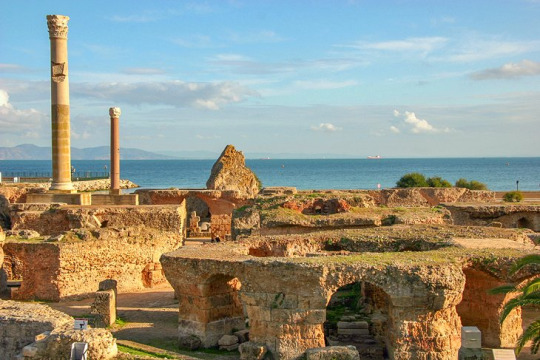
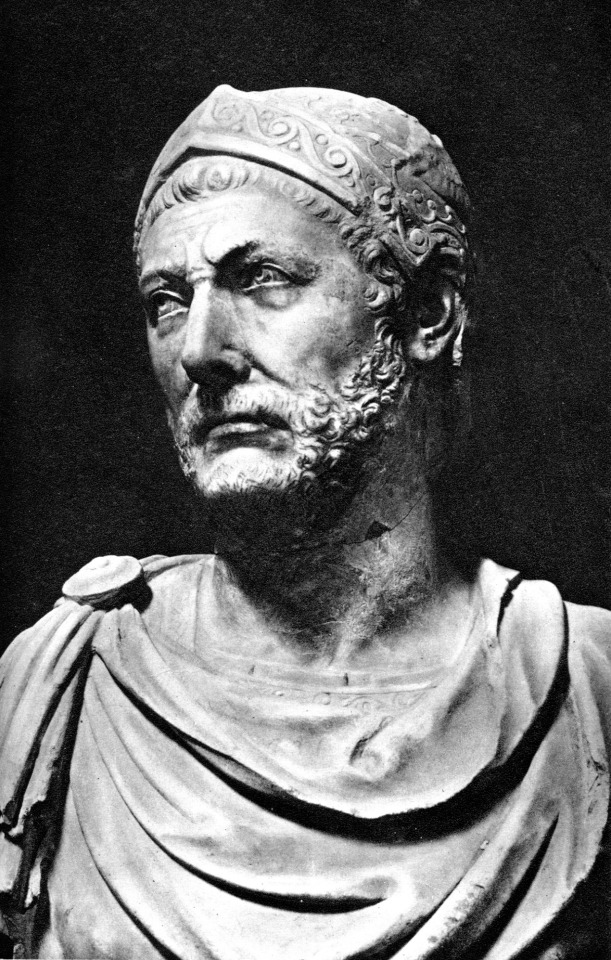
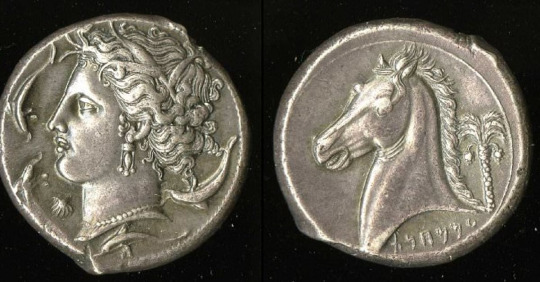





#history#military history#ancient history#ancient world#ancient ruins#ancient carthage#carthage#ancient rome#ancient greece#tunisia#iberia#hannibal#scipio africanus#ancient phoenicia#phoenician#punic wars#sardinia#sicily#corsica#malta#balearic
11 notes
·
View notes
Text

The first Marian apparition in history appeared to Saint James the Apostle, the brother of Saint John the Evangelist, on the bank of the river Ebro in Saragossa, Spain.
Unlike every other recorded apparition, this one took place during the earthly life of the Mother of God.
According to tradition, she had promised Saint James that when he needed it most in his difficult mission to the pagans in today's Spain, she would appear to him to encourage him.
In the year 40 A.D., while praying one night, the Virgin appeared with the Child Jesus standing on a pillar.
The Virgin asked Saint James and his eight disciples to build a church on the site, promising that “it will stand from that moment until the end of time in order that God may work miracles and wonders through my intercession for all those who place themselves under my patronage.”
The Church of Our Lady of the Pillar in Zaragoza is the first church dedicated to Mary in history.
It remains standing to this day, having survived invasions and wars.
During the Spanish Civil War of 1936-1939, three bombs were dropped on the church and none of them exploded.
Our Lady is also said to have given the small wooden statue of the apparition to Saint James, which now stands on a pillar in the church.
Nuestra Señora del Pilar is the patron of Spain and all Hispanic peoples.
12 October 1492: The Feast of the Virgin of the Pillar is the day Christopher Columbus first sighted American land and when the first Mass in the Americas was celebrated.
#Feast of the Virgin of the Pillar#Feast of the Lady of the Pillar#Marian apparition#Saint James the Apostle#Christopher Columbus#Nuestra Señora del Pilar
3 notes
·
View notes
Text

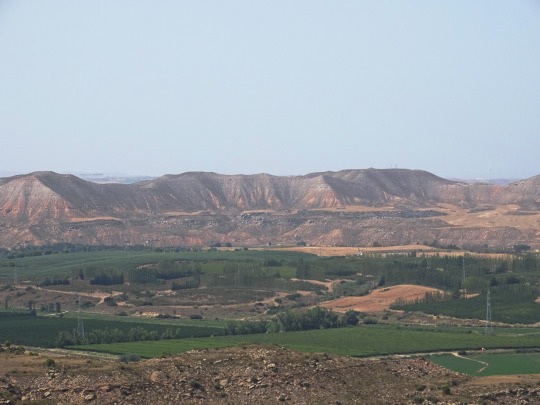
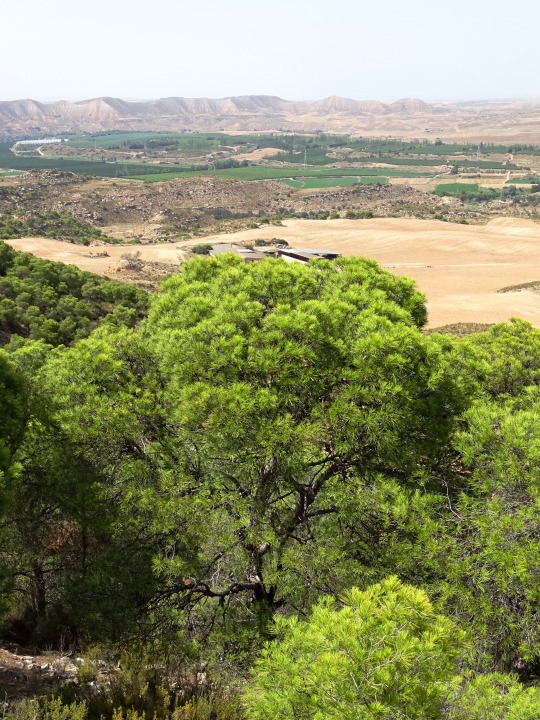

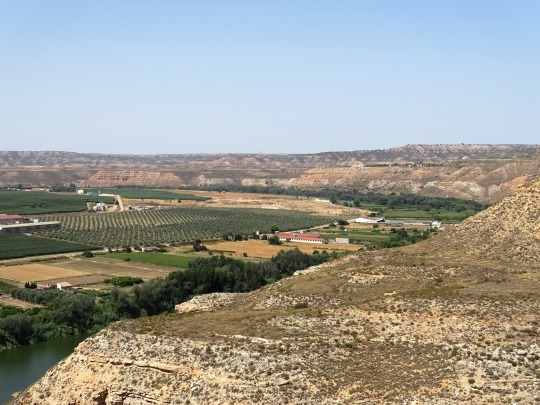

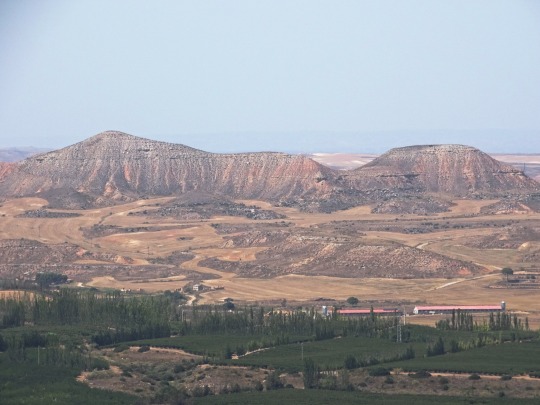



Sástago, Spain (No. 2)
The Ebro is a river of the north and northeast of the Iberian Peninsula, in Spain. It rises in Cantabria and flows 930 kilometres (580 mi), almost entirely in an east-southeast direction. It flows into the Mediterranean Sea forming a delta in the Province of Tarragona, in southern Catalonia. In the Iberian peninsula, it ranks second in length after the Tagus and second in discharge volume, and drainage basin, after the Douro. It is the longest river entirely within Spain; the other two mentioned flow into Portugal. It is also the second-longest river in the Mediterranean basin, after the Nile.
Source: Wikipedia
#Mirador del Ebro#Mirador de Los Meandors#Sástago#province of Zaragoza#Aragon#Ebro River#Northern Spain#Southern Europe#travel#original photography#vacation#tourist attraction#landmark#architecture#cityscape#landscape#countryside#view#summer 2021#flora#nature#bridge#España#ruins#riverbank
3 notes
·
View notes
Text
The Best Wine Regions to Explore This Year
For cheap and best Travel Bookings - https://tripsdeals.com/
Wine lovers and travel enthusiasts alike are constantly on the lookout for the best wine regions to explore each year. Whether you're a connoisseur or just looking to enjoy scenic views while sipping fine wine, there are several regions around the world that offer both exceptional wines and unforgettable travel experiences. Here are some of the top wine regions to explore in 2025.
1. Napa Valley, California, USA Napa Valley remains one of the world's most renowned wine regions. Located in the heart of California, Napa is famous for its stunning landscapes, top-notch wineries, and wine tours. The area boasts a variety of wine varieties, including Cabernet Sauvignon, Merlot, and Chardonnay. Visitors can enjoy tasting sessions, guided tours, and luxurious stays in vineyard hotels, making it an ideal destination for wine lovers seeking elegance and charm.
2. Bordeaux, France Known as the birthplace of some of the world's finest wines, Bordeaux offers an unparalleled wine experience. The region is home to numerous vineyards that produce exceptional red and white wines, especially Cabernet Sauvignon, Merlot, and Sauvignon Blanc. A trip to Bordeaux provides the perfect opportunity to explore the rich history of wine production, tour the vineyards, and indulge in gourmet food paired with the region’s best wines.
3. Tuscany, Italy Tuscany is a dream destination for wine lovers, famous for its picturesque landscapes and iconic Chianti wines. The rolling hills dotted with vineyards create a perfect backdrop for enjoying wine tasting tours. The region's rustic charm, historic towns like Florence, and its exceptional wines, including Sangiovese, make Tuscany one of the most captivating wine regions in the world. Visitors can explore both small family-owned wineries and larger estates.
4. Mendoza, Argentina For those seeking an exotic and exciting wine experience, Mendoza in Argentina is the place to be. Situated at the foot of the Andes mountains, Mendoza is famous for Malbec, a wine that has become synonymous with Argentina. The region’s high-altitude vineyards offer a unique climate that creates wines with distinctive flavors. Mendoza is known for its breathtaking landscapes, making it an excellent destination for both wine tasting and outdoor activities.
5. Rioja, Spain Rioja is one of Spain’s most famous wine regions, renowned for its rich red wines made primarily from the Tempranillo grape. The region's combination of modern wineries and traditional bodegas creates a fascinating contrast for visitors. Rioja is not just about wine – its medieval villages, stunning views of the Ebro River, and delectable local cuisine make it a must-visit for wine enthusiasts.
No matter your destination, these wine regions promise rich experiences filled with world-class wines and unforgettable adventures. Plan your trip to one of these stunning regions to indulge in the best wines the world has to offer!
#NapaValley#Bordeaux#Tuscany#Mendoza#Rioja#WineRegions2025#WineTravel#WineLovers#BestWines#WineTours#TravelDestinations#FoodAndWine
0 notes
Text
It's A Wonderful Forest
For some years now, five I think, winters here have been fairly mild, by this I mean no snow. Up above us the foothills of the Pyrenees have been a lovely white, and skiing is well under way. Although we’re not that far from them our mountains aren’t as high so we don’t always get the snow. However, what happens up there does affect us.
If the mountains get lots of rain, then it usually means the river Ebro will be at its height as it runs down towards the Mediterranean and they let more water through from Aragon and above. In years gone by there were no dams to hold back the snow melt, and water from storms so large areas of the river overflowed its banks and not by inches. In town theres a mark on the church wall where the last flood reached, and as the town is built on hills its scary. So eventually they built dams, the count so far 187! The nearest being up at Mequinenza.
There are a wide range of sporting activities on the Ebro, kayaking, fishing, boating and such but although the river is navigable there are huge boulders in it from the days when it ran wild and free before being tamed by the dams. On a Saturday morning, we sometimes go to Miravet outdoor vegetable market where we can sit by the river enjoying coffee and a snack whilst watching the kayaks sliding past. I have to admit that the one place we haven’t been to is the Templer castle, but that’s for another day another story.
Whilst sitting at the café watching the river, we can also see our mountain range with our hidden valley. The one thing I notice most is the colour of the pines that cover them. At certain times of the year from a distance the mountains can look a dark almost dead blue, at others they appear not actually green but almost so. But up close they begin to take on the wonderful young spring green of new life.
Its this time of year that our forest starts to come alive again. The trees seem to stand taller, look green and fresh, plus you can see the fresh growth arriving. In a month or so there will be pollen from the pines leaving a green film on water and over most of the finca. Then the olive trees bloom. It’s surprising how many people didn’t know they bloom they go from a dull green to a creamy green and the bees love them.
So, although winter up here is cold even with the sun out, its still a wonderful life, full of new things and changes which, as my wife has discovered, might have been here all along but she’s only just seen them because the forest changes all the time. Trees get blown down or just fall exposing things that the bushes and smaller trees have hidden, new flowers and fruit trees often appear, their seeds scattered around by birds and animals.
No despite being up here we wouldn’t change it for anything. Today is the first day we’ve had total sun and my wife went outside looked at her garden beds and heaved a sigh, so much work to be done…..me I’ve just put my latest book From The Dying Planet on Amazon Kindle, writing is my one place I can go and forget the world and it’s problems for a while. So now I’m back to another story, perhaps I’ll write about life up here who knows.Forest
MD Bosc
Forest Life, Books, From The Dying Planet, science, Mars, space travel, origins, trees, rivers
0 notes
Text
A new record: temperatures are so high, that yesterday Gavarda (a town in the Valencian Country) registered the highest temperature ever recorded in Europe in January: 30.7°C (87.26°F). This would usually be the expected temperature in early May. The previous record was set in 2021 (29.8°C in Alacant). We are record after record, and it's not good.
This adds on the drought that the Catalan Countries have been suffering for 3 years. We have water use restrictions and many farmers have lost the harvests for months because they're not allowed to water the fields. And there's no prospect for generous rain any time soon. Experts have been warning that for every degree Celsius that temperatures rise in the Mediterranean region, annual rain will reduce by 4%, and since we're a region that is already naturally prone to summer droughts, this will mean 20% less water resources.
The Mediterranean region is one of the places in the Earth that heats the most because of climate change. There will be 40% more days with extreme heat (days with temperatures higher than 35°C=95°F), which will have effects on health, particularly on open-air workers, and will suppose a 17% decrease in agriculture produce. That is, without counting rising sea levels.
The Mediterranean region is inhabited by 400-500 million people, out of which 150 million live on the coast. Experts calculate that the sea will have risen 1 meter (it's not out of the question that it might have risen even more if polluting emissions aren't reduced) by the end of the century. Considering that 37% Mediterranean coast is very low, on sea level, this means that this rise of the Mediterranean sea will put about 42 million people in extreme danger. One of the first victims will be (and is already suffering the early effects) the Delta of the Ebro river, a mostly-agricultural area in the South of Catalonia which is also a Biosphere reserve due to its great biodiversity.
And some people still say climate change isn't real 🤦
#actualitat#climate emergency#climate change#mediterranean#coses de la terra#delta de l'ebre#gavarda#país valencià#climate#environmentalism#europe#sustainability#ecology#earth#global warming#climate crisis#weather#meteorology#world record
154 notes
·
View notes
Text
Wine Touring in the Najerilla Valley
The Najerilla river flows from the mountains of the Sierra de la Demanda to the Ebro River, making this a special corner of La Rioja, with a unique style of wine, the lower part of the valley yielding the region’s most balanced wines. The valley, considered by many to be central to La Rioja vineyards, is one of the Seven Valleys of the Rioja, has the greatest number of acres dedicated to wine…
1 note
·
View note
Text


Where Water Does Not Flow
All over the world irrigation (especially for cash crops) has reached the point of diminishing returns, where mineral salts increase the salinity of water and decrease output: in 1990 30– 40% of the world’s irrigated cropland was estimated to be waterlogged or suffering from excessive salinisation. 63% of water used in 1991 was for irrigation, a figure projected to decline to 55% by 2000. It is now generally recognised that irrigation projects are most likely to succeed when fallow periods are observed and when managed by local communities. The reliance on large-scale irrigation has spread from luxury export crops in dry climates to the production of ordinary crops for supermarkets that account for most of British retail trade. Big farmers are encouraged by the National Rivers Authority (NRA) and the Ministry of Agriculture to build their own reservoirs and are licensed to take water from rivers, despite the impacts on other users.
Because it is fixed and stable, land can be divided by hedges or walls and turned into private property, personal wealth and inheritance. But water should be a communal asset, because it will not stay still. For thousands of years legal and informal systems have accepted and insisted that there can be no ownership of running water. There is a long history of human societies that have developed elaborate systems to ensure fair access for all to water: the water communities on the Genil, Segura and Ebro rivers are examples of solidarity and social co-operation created by the Spanish on the foundations laid by the Phoenicians, the Roman Empire and the Moors. The modern technology of pipes, pumps and motive power makes such schemes easier. For irrigation, local control of water is all-important and can be achieved in many ways. In a centuries old system in Bali, all farmers taking water from the same stream or river are members of a sebak organisation, meeting every 35 days, with its own systems of law. It plans planting days, distributes water equitably and fines cheats. In the smallscale irrigation systems of eastern Spain under the Moors, water belonged to the community and was sold with the land. Continual disputes about its use in times of scarcity were regulated by a communal organisation, the huerta in places such as Aragon. Here water belongs to farmers and growers through whose land it passes, each water user belongs to a comunidad de regantes (association) that elects a sindico, the combination of sindicos from each zone constitutes the Water Tribunal. These meet to judge rations during scarcity; no lawyers or state laws are involved, fines are sometimes imposed and always paid.
#freedom#ecology#climate crisis#anarchism#resistance#community building#practical anarchy#practical anarchism#anarchist society#practical#revolution#daily posts#communism#anti capitalist#anti capitalism#late stage capitalism#organization#grassroots#grass roots#anarchists#libraries#leftism#social issues#economy#economics#climate change#climate#anarchy works#environmentalism#environment
1 note
·
View note
Text
The Best Wine Country Tourism Destinations for Red Wine Lovers
Red wine lovers will find exceptional experiences in the world's best wine country tourism destinations. Napa Valley, California, offers renowned Cabernet Sauvignon, while Bordeaux, France, is famous for its Merlot and Cabernet blends. Tuscany, Italy, is a must-visit for Sangiovese enthusiasts, and Spain's Rioja region is perfect for Tempranillo lovers. The Douro Valley in Portugal offers rich Port wines, making these regions ideal for savouring the finest red wines amid stunning landscapes.
A Premier Wine Country Tourism Destination for Cabernet Sauvignon Lovers
Napa Valley, California, stands as a top wine country tourism destination for red wine enthusiasts, especially those who adore Cabernet Sauvignon. Known for its world-class wineries and picturesque vineyards, Napa offers a rich experience in wine tasting and vineyard tours. Visitors can explore iconic estates and boutique wineries, savouring the region's bold, full-bodied Cabernets. The combination of exceptional wines, luxury accommodations, and scenic beauty makes Napa Valley a must-visit for any red wine lover.
Wine Country Tourism in France’s Red Wine Capital
Bordeaux, France, is synonymous with red wine excellence, making it a prime wine country tourism destination for those who appreciate complex blends. The region is famous for its Merlot and Cabernet Sauvignon-based wines, offering a variety of tasting experiences. Visitors can tour historic châteaux, explore the charming city of Bordeaux, and immerse themselves in the rich wine culture. The region's wines are celebrated for their balance, structure, and ageing potential, offering a deep dive into the world of red wine.
A Wine Country Tourism Haven for Sangiovese Enthusiasts
Tuscany, Italy, is a dream destination for wine country tourism, especially for those who love Sangiovese-based wines. The region is home to famous wine areas like Chianti, Montalcino, and Montepulciano, where visitors can taste some of the finest red wines Italy has to offer. Tuscany’s rolling hills, mediaeval villages, and rich culinary traditions complement the wine tasting experience, creating a perfect blend of culture, history, and gastronomy for red wine lovers.
The Evolution of Spanish Red Wines Country Tourism
The Rioja region in Spain is a must-visit wine country tourism destination for fans of Tempranillo. Known for producing some of the country’s most prestigious red wines, Rioja offers a unique blend of tradition and innovation in winemaking. Visitors can explore centuries-old bodegas, sample a range of wines from young to gran reserva, and enjoy the stunning landscapes of vineyards stretching across the Ebro River valley. Rioja's robust and flavorful wines are a true delight for red wine enthusiasts.
Portugal’s Wine Country Tourism Gem for Rich Red Wines
Portugal’s Douro Valley is a breathtaking wine country tourism destination known for its rich and flavorful Port wines. The region’s steep, terraced vineyards produce some of the finest red wines in the world, offering a unique tasting experience. Visitors can embark on river cruises, tour traditional wine cellars, and taste the region's bold, fortified wines. The Douro Valley's dramatic landscapes and historic winemaking heritage make it an unforgettable destination for red wine lovers.
Australia’s Wine Country Tourism Destination for Shiraz Lovers
Barossa Valley in Australia is a top wine country tourism destination for those who love Shiraz. Known for producing some of the world’s most powerful and flavorful red wines, Barossa offers a unique combination of old-world charm and modern winemaking techniques. Visitors can explore renowned wineries, enjoy gourmet food pairings, and take in the stunning Australian countryside. Barossa Valley’s robust and spicy Shiraz wines are a true highlight for any red wine enthusiast.
Wine Country Tourism in California’s Red Wine Haven
Sonoma County, neighbouring Napa Valley, is another premier wine country tourism destination in California, offering a diverse range of red wines, including Zinfandel, Pinot Noir, and Cabernet Sauvignon. The region is known for its relaxed atmosphere, family-owned wineries, and scenic beauty. Visitors can enjoy intimate tasting experiences, explore organic vineyards, and discover the rich diversity of Sonoma’s red wines. Sonoma County’s welcoming vibe and exceptional wines make it a favourite for red wine lovers seeking a more laid-back wine country experience.
Conclusion
For red wine lovers, the world's top wine country tourism destinations offer unforgettable experiences steeped in rich flavours and vibrant cultures. From the bold Cabernet Sauvignons of Napa Valley to the historic Merlot and Cabernet blends of Bordeaux, each region provides a unique journey through the art of winemaking. Tuscany’s Sangiovese, Rioja’s Tempranillo, and Douro Valley’s Port wines showcase the diversity and depth of red wines globally. These destinations not only offer exquisite tastings but also immerse visitors in scenic landscapes, historic wineries, and local traditions. Whether exploring well-known regions or discovering hidden gems, red wine enthusiasts will find endless opportunities to savour their favourite wines in some of the most beautiful places on earth.
0 notes